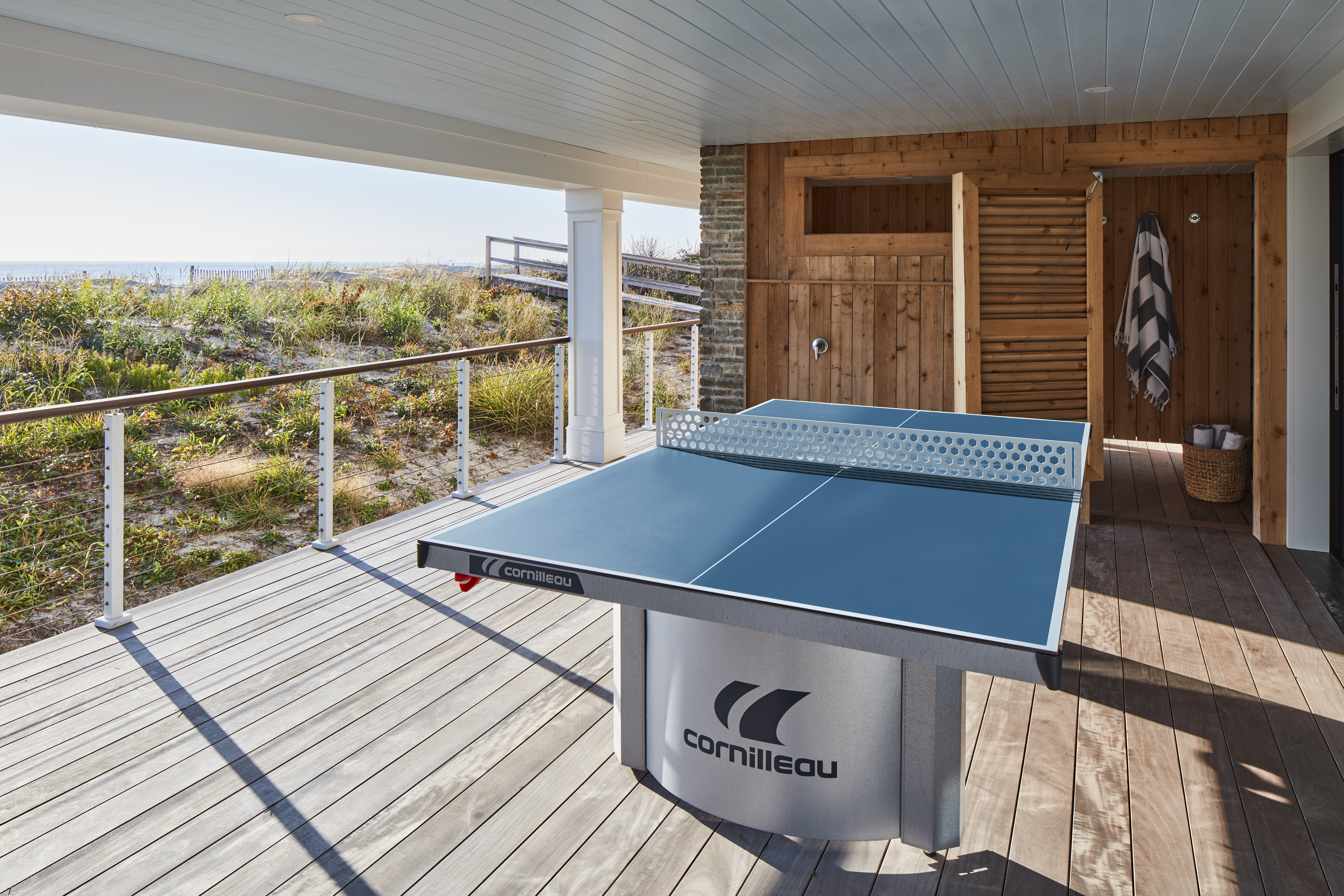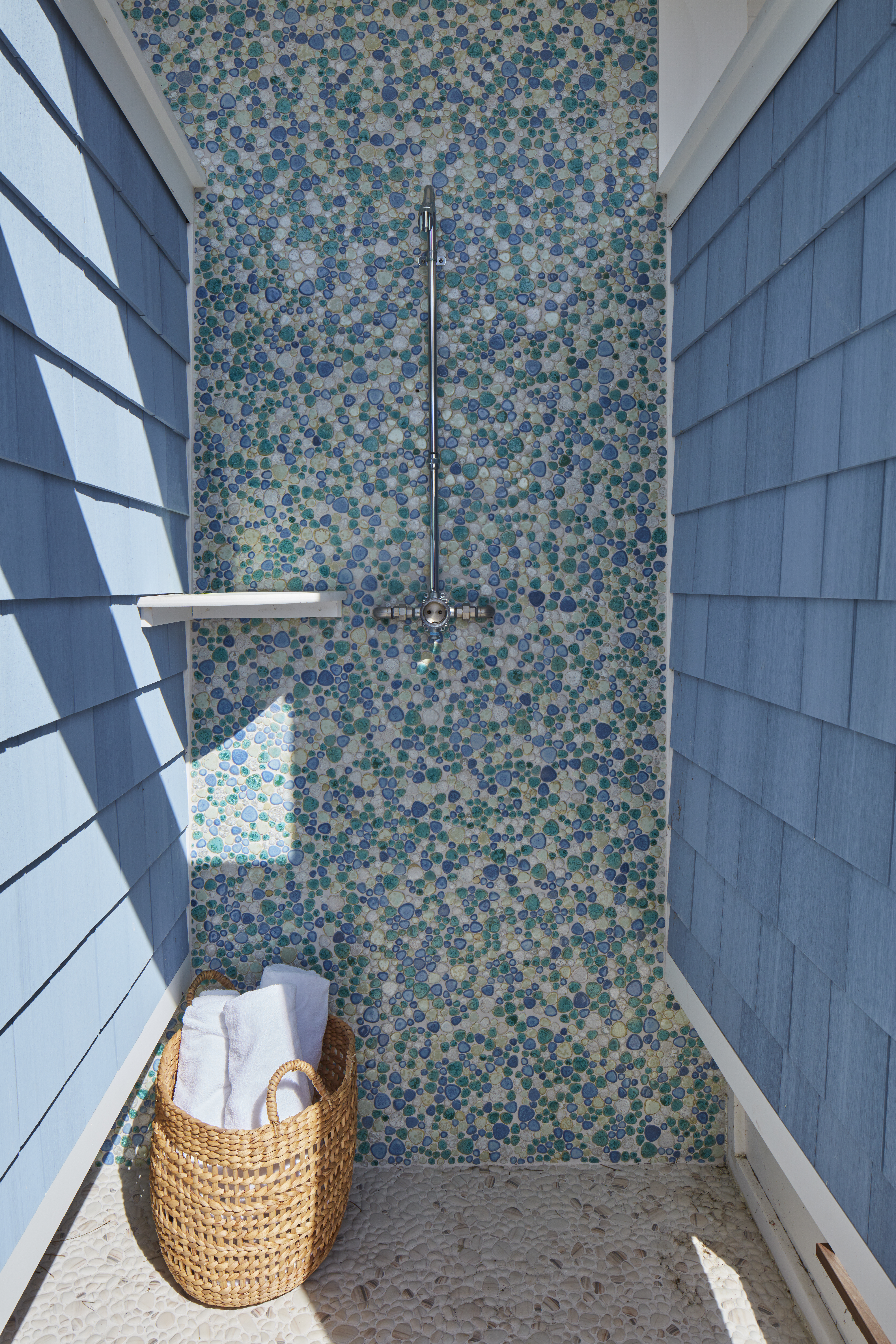Warm Weather Home Maintenance: 10 Boxes to Check Before Spring
The first day of spring is just around the corner (March 20th, for those who are counting down!), and I, for one, could not be happier. I’m a huge proponent of year-round outdoor living, but it’s a lot easier to enjoy without 7 layers of thick clothing, coats, hats, gloves, and scarves in the process. And while the warming sun signals that spring (and summer!) will be here before we know it, it’s also a reminder to assess your home after the long, harsh winter, and ensure its readiness what’s to come. Use my handy 10-point checklist, below, to make sure your home will be ready for anything the season brings.

 1. Examine the chimney
1. Examine the chimney
All those winter fires combined with snow, ice, and cold can wreak havoc on your chimney. Use binoculars or – if you feel safe – scurry up onto your roof to check for any noticeable damage, particularly in the joints between bricks or stones. Hire a professional certified chimney sweep to do a more thorough inspection. He or she can clean any build-up in the flue, ensure the chimney caps are in place, and check that the damper is working properly. Close the damper to save energy when you know you won’t be using the fireplace. For even greater energy savings, insert a fireplace “draft stopper” in the flue once the chimney has been cleaned.

 2. Clean gutters and downspouts
2. Clean gutters and downspouts
Spring storms can spell out big problems for improperly cared for gutter systems. After the last frost of the season, turn your attention to cleaning and repairing your gutters and downspouts. Remove build-up that can lead to clogs that cause wood trim to rot and invite unwanted critters. While doing so, keep an eye our for loose granules that may signal your roof needs to be replaced. Repair or replace loose or leaky gutters that can cause water damage in basements, attics, and crawl spaces. Most foundation damage is due to improper drainage, so always check that your downspouts drain away from the home.

 3. Inspect the roof
3. Inspect the roof
Winter storms can cause serious roof damage that, if left unattended, can lead to problems with a hefty price tag. While you’re examining the chimney or cleaning the gutters, take the time to inspect the roof as well, checking for missing or loose shingles, shingles that have curled, cracked, or buckled, damaged pipes, or anything out of the ordinary. Also inspect flashing around chimneys, plumbing vents, and skylights. Now is also a great time to start a budget for replacing an aging roof.

 4. Service the air conditioning system
4. Service the air conditioning system
Schedule a pro to inspect your system before summer kicks into full gear. In the meantime, clean the coils on the outdoor unit, which helps it run more efficiently and effectively. It’s also time to change your interior air filters; dirty filters force your air conditioner to work harder, increasing energy costs and potentially damaging your system in the process. Filters should be checked monthly and replaced as needed, or at least every three months (and likely more often if you have pets).

 5. Care for exterior wood and woodwork
5. Care for exterior wood and woodwork
Give your exterior woodwork, wood furniture, and wooden structures a healthy dose of TLC after the beating they took all winter (and to prevent damage from the warm sunny days to come). Thoroughly clean decking, fences, railings, pergolas, tables and chairs, trellises, and other wood structures with a pressure washer, then dry and reseal them. Use a screwdriver or awl to probe exterior woodwork and trim for soft spots that should be replaced now before spring rains worsen the damage. Pay special attention to areas that are horizontal and don’t drain well, like windowsills, drip caps, and water tables. Keep an eye out for cracked, peeling, or blistering paint or wood that’s darker in areas or has green algae. And be sure to check anywhere there’s end grain, which readily absorbs water. Inspect joints (which dry slowly) and wood that’s close to dirt, concrete, or masonry. If you’re able to easily push the tool’s tip into the piece of wood in question, it needs to be fixed.

 6. Inspect hardscaping
6. Inspect hardscaping
The repeated freezing and thawing that winter brings is brutally hard on concrete, asphalt, and other hardscaping. The resulting cracks and other damage is not only unsightly, but also can cause accidents or falls. Wait for a mild day to power-wash and seal your driveway, walkways, paths, and stairs, and then fill any cracks with concrete crack filler or silicone caulk.

 7. Paint the exterior
7. Paint the exterior
Winter weather can dull, chip, or otherwise put a damper on exterior paint jobs, and there’s no better time to remedy it than early spring. If a whole-house repaint isn’t in the plan or budget, stick with touch-ups to any chips on trim, shutters, doorways, etc. for instantly improved curb appeal. First, scrape off chipped and peeled paint and then give it a light sanding before spot-painting the damaged areas. But don’t delay repainting once you’ve exposed the wood – exposed wood will quickly rot, especially during the wet spring season.

 8. Test the outdoor water system
8. Test the outdoor water system
Winter’s hard freeze can lead to a host of outdoor water system issues, so it’s best to get a jump start on spotting and addressing them now. Run your sprinklers or irrigation system and then walk your property. Check for broken heads and adjust heads that are spraying the house, deck, porch, street, or other unwanted areas to avoid wasting water. Check hose faucets for freeze damage by turning the water on and placing your thumb over the opening. If you can stop the flow of water, the pipe inside the home is likely damaged and should be replaced. Turn outdoor showers back on and make sure the water is flowing – and draining – correctly.

 9. Clean and repair screen doors and windows
9. Clean and repair screen doors and windows
Spring is the time to throw open the windows and enjoy those screened-in porches while the sun is warm and the breeze is still cool. But first, make sure all of your screens are clean and without holes to let the breeze in and keep bugs out. Begin by washing windows inside and out to let that beautiful spring sunshine in. Clean sills with a soft brush or vacuum attachment. Ensure that weep holes, which drain rainwater to the exterior, aren’t clogged by pouring a small amount of water into the sill. Use a thin piece of wire to gently clear any holes that don’t drain. While you’re cleaning the screens, keep an eye out for holes and tears which you can repair with DIY kits from hardware or home improvement stores.

 10. Ensure good drainage with compacted soil
10. Ensure good drainage with compacted soil
Before the spring rains roll in, fill low areas in your yard – especially those next to the foundation – with compacted soil. Soil should slope away from the foundation at least six vertical inches over 10 feet, which will move rain and snowmelt far enough away to prevent problems. Without proper drainage, water can pool in these low areas, causing damage to your home and creating a breeding ground for insects, especially mosquitoes. Not only are mosquitoes bothersome, but they can also be carriers of Zika and West Nile virus (while you’re at it, keep an eye out for other places around your yard where water can pool and remove or repair them before insect season begins).
Happy Spring!
